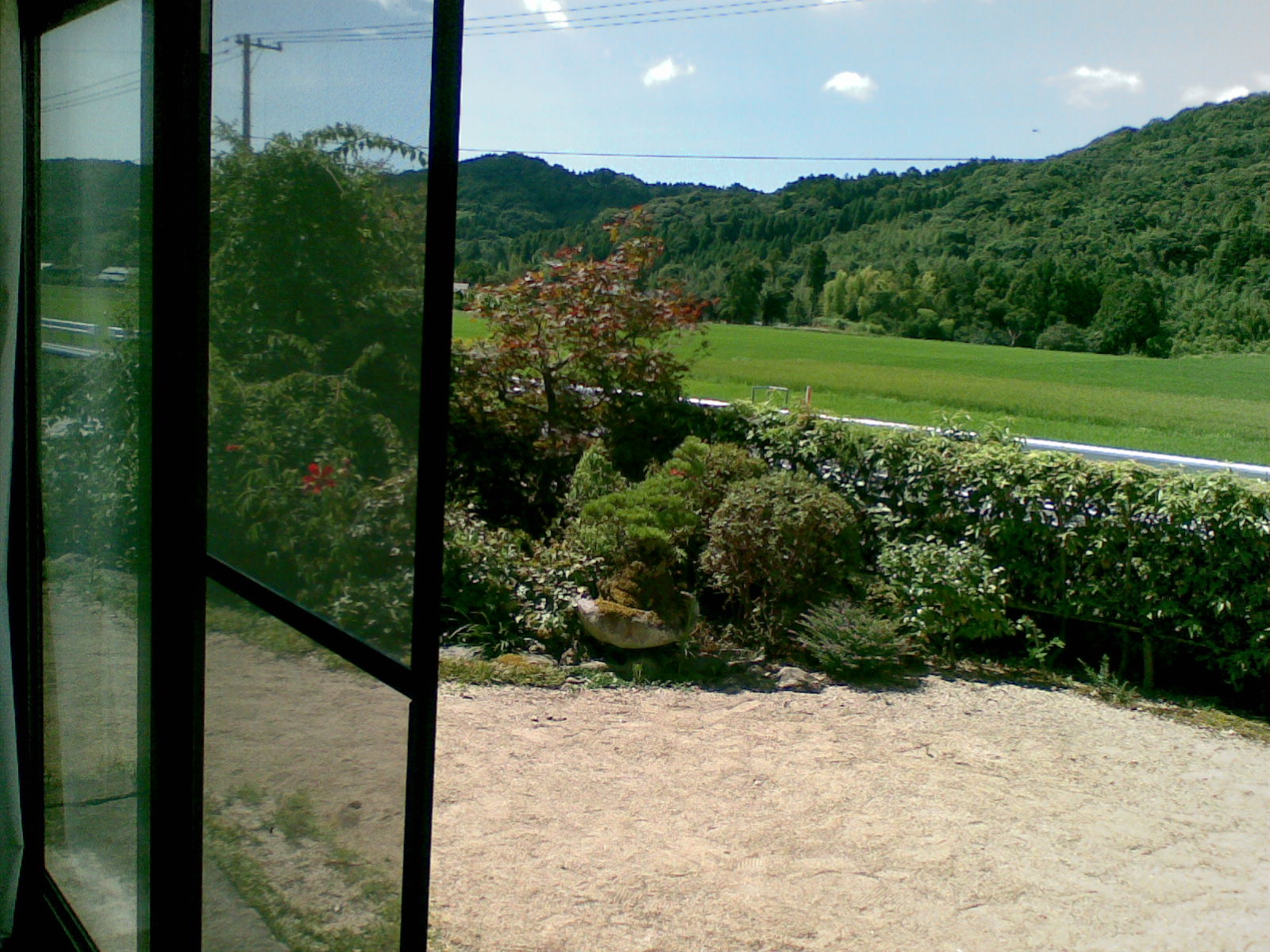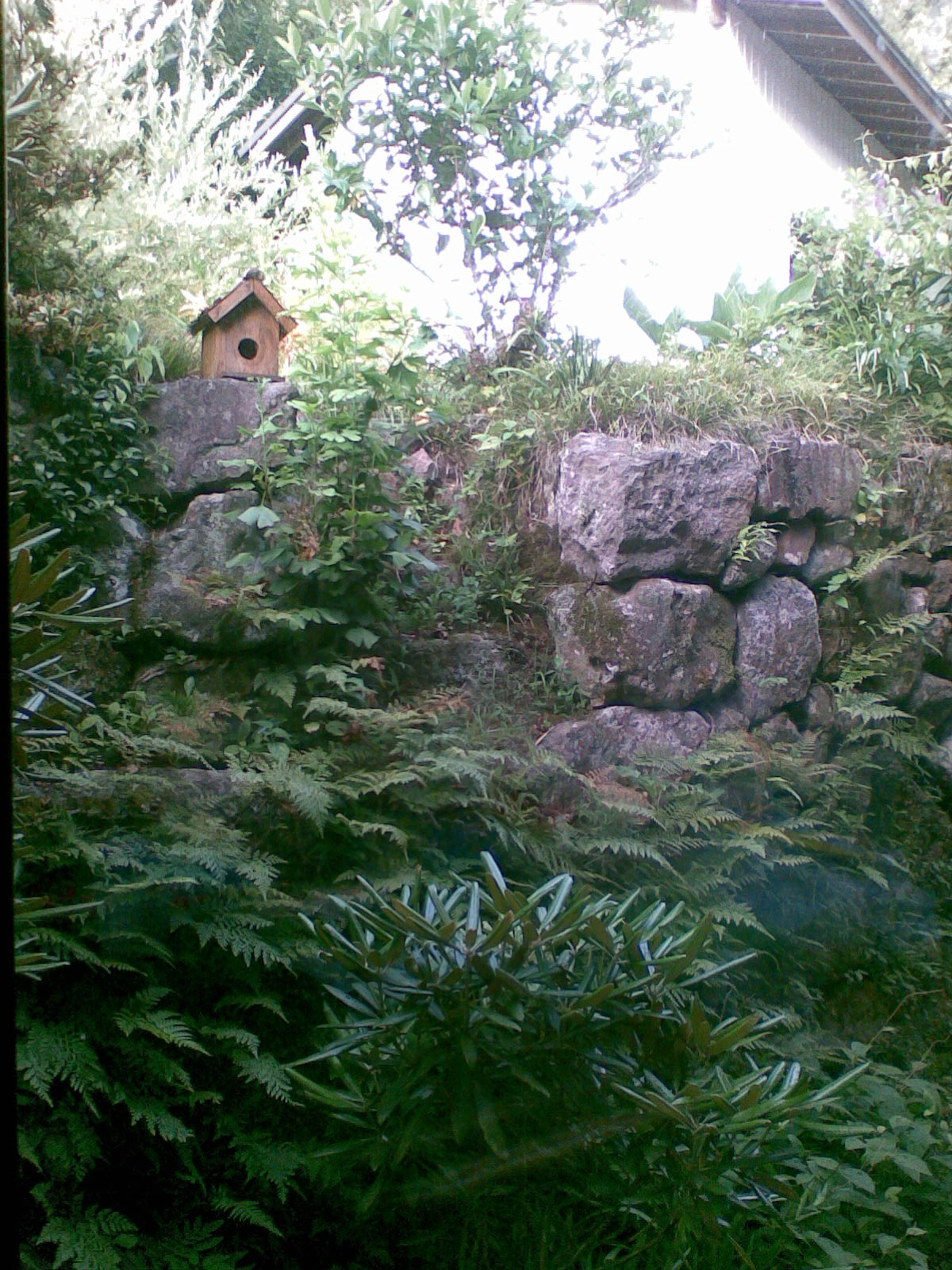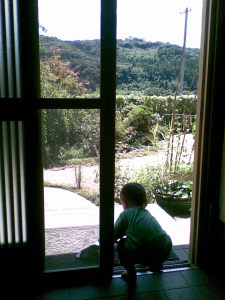Yesterday we took a drive to 大田 (
Ōta), out of our village, over the mountains and into a new valley. Far, far away. Or 20 minutes by car.
An interesting Gaijin is based there and he'd invited us over for a cuppa. "Cuppa you say?". Oh yes, another expat Brit, who now calls the countryside of Japan his home.
I had heard that he had a
Trekking company, and the tours actually included Kunisaki! Yes, our home turf.
As you may know, we had just helped to harvest a small rice crop, and this harvesting naturally coincides with producing the new season's お酒 (sake) or Japanese brewed rice wine.
Well I'm getting into the swing of celebrating, having liberally self infused 麦酒 (birru or beer) and some tasty but dangerous 35% 焼酎 (shōchū), the local Japanese firewater, possibly distilled from used monks' tunics. Do I sound harsh? Well combine the two, and you too can significantly disable essential motor neurons, as I did on the day of the
rice harvest. Yes, it's all fun and games until someone loses an eye!
Well in Ota they take celebrating one step further. At the Shirahige Tahara Shinto shrine they have a whole festival to mark the occasion. And its all about celebrating the harvest, and that new sake. How decadent I say. And it was. Here is some news about it from last year's
event (Oct 2010).
It's called the Shirahige Tahara Doburoku Matsuri. The main word to remember is Doburoku. Maybe look on the container for 濁酒. Then put it somewhere safe, away from small children, alcoholics or designated drivers. It is the first phase of the fermentation process. So we're talking unrefined sake here. It's not much more than a white liquid mash of the rice, but fermented (to some 20% alcohol).
On an intellectual note, I believe records indicate this festival has been held at least since A.D. 710! So I felt quite privileged to be invited over for such a special occasion.
Anyway, screw the history, Wikipedia tells me that
Doburoku is apparently the classic home-brew style of sake. Strange that home brewing is illegal in Japan, but these are holy people, after all. The concoction is created by simply adding 麹菌 (
kōji-kin) mold to steamed rice and water and letting the mixture ferment! The resulting sake is somewhat like a chunkier version of nigorizake, so Wikipedia tells me!
Quick aside, to help you catch up, 濁り酒 (Nigorizake) is 'cloudy' sake. The white cloudy part settles into the bottom of the bottle. That caught my eye recently at a local store. Like in my first week here in Japan. Just shake then decant. Possibly the other way around. Nigorizake I say, very nice indeed.
Well be wary should you try this festival. The police wait at the road exits and check the driver. The Shrine staff also kindly warn you as they give out the doburoku. In Japanese of course. Just after you've tossed your coins and rung the ceremonial bell. Drink too much and you'll be tossing more than coins I tell you. And you know you've arrived in Shrine country the first time you do it. Ermmm, rung the bell not tossed your..., well you know what I mean. Paul, my host, explained the basics as I followed his lead. He also pointed out how the police give you free tissues after stopping you. How polite! To cry in no doubt if you fail the test. Seriously though, it's a 'no no' here - only a zero blood alcohol level is acceptable!

In Japan there is always the food. All around were food outlets, but Paul said there was a real Curry vendor around. The hook was out and I was caught, line and sinker. The nice lady told us she was from North India. Now I do like hot southern Indian curries after my stay in Bangalore, but a good curry (it's the spices that count) is always tasty, as was this one.
Oh, I know, how could I talk about Indian curries when at a culturally significant Japanese heritage site! Well get used to it, this is modern Japan, people came in some futuristic 660cc Kei car, have fancy Nikon cameras and eat curry. And maybe it's the mix of perfectly preserved local tradition and the best that is foreign, which makes Japan so unique. You really have to come! So keep your eye on this story, in case they decide to implement it, and you can come for free!
Tourism Ministry proposes to invite 10,000 foreign tourists to Japan, paying all travel expenses
[Ed: I've just recalled that Ota used to be called Ota-Mura. And from one of the first Japanese surnames I learnt, I know that Mura means village. Paul told me that Ota had been absorbed into Kitsuki at some point, and I believe many towns merged in 2005]



















